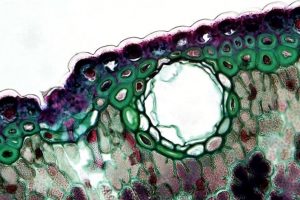study guide for cellular respiration and photosynthesis

This guide provides a comprehensive overview of cellular respiration and photosynthesis, focusing on their mechanisms, key molecules, and interconnections. It includes detailed explanations, diagrams, and practice questions to enhance understanding.
Cellular respiration and photosynthesis are two fundamental biological processes that underpin life on Earth. Photosynthesis, carried out by plants, algae, and some bacteria, converts light energy into chemical energy, producing glucose. Cellular respiration, a process found in all living organisms, breaks down glucose to release energy in the form of ATP. These processes are intricately linked, forming a cycle that sustains life. Photosynthesis generates the oxygen and glucose needed for cellular respiration, while respiration produces the carbon dioxide required for photosynthesis. Understanding these processes is essential for grasping how energy flows through ecosystems and how life maintains itself. This study guide explores these processes in detail, helping students master their mechanisms, key molecules, and interconnections.
Importance of Understanding Both Processes
Understanding cellular respiration and photosynthesis is crucial for grasping the foundation of life and energy flow in ecosystems. These processes are interconnected, forming a cycle that sustains life on Earth. Photosynthesis produces oxygen and glucose, essential for cellular respiration, while respiration generates carbon dioxide, critical for photosynthesis. Comprehending these processes aids in understanding how living organisms obtain and utilize energy. This knowledge is vital in fields like environmental science, medicine, and agriculture, where energy production and plant growth are central. Additionally, it helps explain phenomena such as climate change and the importance of oxygen in sustaining life. By studying these processes, students gain insights into the intricate balance of nature and the interdependence of all living organisms.

Cellular Respiration
Cellular respiration is a vital process where cells convert glucose into energy, producing ATP. It occurs in all living organisms, releasing carbon dioxide and water as byproducts.
Overview of Cellular Respiration
Cellular respiration is the process by which cells break down glucose to generate energy in the form of ATP. It involves three main stages: glycolysis, the Krebs cycle, and oxidative phosphorylation. These stages occur in the cytoplasm and mitochondria, respectively. Glycolysis is the first step, where glucose is split into two molecules of pyruvate, producing a small amount of ATP and NADH. The Krebs cycle further breaks down pyruvate, producing more ATP, NADH, and FADH2. Finally, oxidative phosphorylation uses these molecules to produce a large amount of ATP through the electron transport chain; This process is essential for life, providing energy for cellular functions and maintaining homeostasis. Understanding cellular respiration is crucial for grasping how cells function and how life sustains itself.
Stages of Cellular Respiration
Cellular respiration is divided into three distinct stages: glycolysis, the Krebs cycle, and oxidative phosphorylation. Glycolysis occurs in the cytoplasm and does not require oxygen. It breaks down glucose into two molecules of pyruvate, producing a small amount of ATP and NADH. The Krebs cycle, also known as the citric acid cycle, takes place in the mitochondrial matrix; It further breaks down pyruvate, generating more ATP, NADH, and FADH2. The final stage, oxidative phosphorylation, occurs in the inner mitochondrial membrane. It involves the electron transport chain, where electrons from NADH and FADH2 are transferred to oxygen, producing a large amount of ATP through chemiosmosis. Together, these stages efficiently convert glucose into usable energy, emphasizing the critical role of cellular respiration in sustaining life.
Key Molecules in Cellular Respiration
Several key molecules play essential roles in cellular respiration. Glucose is the primary energy source, broken down into pyruvate during glycolysis. Adenosine triphosphate (ATP) is the energy currency of the cell, storing and releasing energy as needed. Nicotinamide adenine dinucleotide (NADH) and flavin adenine dinucleotide (FADH2) are electron carriers that transfer electrons during the Krebs cycle and oxidative phosphorylation. Oxygen acts as the final electron acceptor in the electron transport chain, enabling the production of water. These molecules are critical for the efficient conversion of glucose into energy, highlighting their importance in cellular respiration.
Importance of Cellular Respiration
Cellular respiration is vital for the survival of nearly all living organisms, as it provides the energy required to sustain life. It converts glucose into adenosine triphosphate (ATP), the primary energy currency of the cell. This process supports essential functions such as muscle contraction, nerve impulses, and biosynthesis. Additionally, cellular respiration plays a critical role in maintaining ecological balance by recycling carbon dioxide back into the atmosphere, which is essential for photosynthesis. Without cellular respiration, life as we know it would cease to function, as energy would no longer be available to power cellular activities. It is also crucial for both autotrophs and heterotrophs, ensuring the flow of energy through ecosystems. Understanding this process is fundamental for fields like medicine, ecology, and biotechnology.

Photosynthesis
Photosynthesis is the process by which plants, algae, and bacteria convert light energy into chemical energy, producing glucose and oxygen. It sustains life on Earth by providing energy and organic compounds for food chains.
Overview of Photosynthesis
Photosynthesis is a vital biological process where plants, algae, and certain bacteria convert light energy into chemical energy. This process occurs in specialized organelles called chloroplasts, primarily in the thylakoid membranes and the stroma. The basic equation for photosynthesis is:
6CO₂ + 6H₂O + light energy → C₆H₁₂O₆ (glucose) + 6O₂
It involves two main stages: the light-dependent reactions and the Calvin Cycle. The light-dependent reactions capture light energy and produce ATP and NADPH, while the Calvin Cycle uses these molecules to fix carbon dioxide into glucose. This process not only provides energy and organic compounds for plants but also sustains life on Earth by supplying oxygen and food for herbivores. Understanding photosynthesis is essential for grasping how ecosystems function and how life is supported at its most fundamental level.
Light-Dependent Reactions
The light-dependent reactions are the first stage of photosynthesis and occur in the thylakoid membranes of chloroplasts. These reactions require direct light and involve pigments such as chlorophyll a and b, and carotenoids. Chlorophyll a plays a central role by absorbing light primarily at wavelengths of 430 nm (blue) and 660 nm (red). When light is absorbed, it energizes electrons, which are transferred through a series of electron carriers in the thylakoid membrane. This electron transport chain creates a proton gradient across the membrane. ATP synthase enzymes use this gradient to produce ATP. Simultaneously, NADPH is formed, which is essential for the Calvin Cycle. The light-dependent reactions also produce oxygen as a byproduct when water molecules are split to release electrons. These reactions are critical for generating the energy and reducing power needed for the subsequent light-independent reactions.
Light-Independent Reactions (Calvin Cycle)
The light-independent reactions, also known as the Calvin Cycle, occur in the stroma of chloroplasts and do not require direct light. These reactions use ATP and NADPH produced in the light-dependent reactions to fix carbon dioxide into glucose. The cycle consists of three main stages: carbon fixation, reduction, and regeneration of RuBP. In carbon fixation, CO2 is attached to ribulose-1,5-bisphosphate (RuBP) by the enzyme RuBisCO, forming a 6-carbon compound that splits into two 3-carbon molecules (PGA). These are reduced to form glyceraldehyde-3-phosphate (G3P) using ATP and NADPH. Finally, RuBP is regenerated to continue the cycle. The Calvin Cycle is essential for producing G3P, which can be used by plants to synthesize glucose or other organic molecules. This process is critical for converting atmospheric CO2 into energy-rich compounds, supporting life and the food chain.
Key Molecules in Photosynthesis
Photosynthesis relies on several key molecules to facilitate energy conversion. Chlorophyll, the green pigment, absorbs light energy, with chlorophyll a being the most critical for photosynthesis. Accessory pigments like chlorophyll b and carotenoids enhance light absorption. Water molecules are split in the light-dependent reactions to release oxygen and provide hydrogen ions; ATP and NADPH, produced in the light-dependent reactions, are essential for the Calvin Cycle. RuBisCO, an enzyme in the stroma, catalyzes the fixation of CO2 into organic molecules. Ribulose-1,5-bisphosphate (RuBP) is a 5-carbon molecule central to the Calvin Cycle, regenerating after each cycle. Glyceraldehyde-3-phosphate (G3P) is a key product used to synthesize glucose. These molecules work together to convert light energy into chemical energy, supporting plant growth and oxygen production. Understanding their roles is vital for grasping how photosynthesis sustains life on Earth.
Importance of Photosynthesis
Photosynthesis is a fundamental biological process essential for life on Earth. It provides oxygen as a byproduct, supporting aerobic respiration in nearly all living organisms. Plants, algae, and some bacteria use photosynthesis to produce glucose, which serves as a primary energy source for food chains. This process also plays a critical role in the Earth’s carbon cycle by converting carbon dioxide into organic compounds, thereby regulating atmospheric CO2 levels. Additionally, photosynthesis supports agricultural productivity, ensuring the growth of crops that sustain human populations and ecosystems. Without photosynthesis, the energy flow in ecosystems would collapse, making it a cornerstone of life as we know it. Its importance extends beyond biology, influencing climate regulation and the balance of natural systems globally.

Relationship Between Cellular Respiration and Photosynthesis
Cellular respiration and photosynthesis are interconnected processes. Photosynthesis converts light energy into glucose, which cellular respiration breaks down to produce energy (ATP) and release oxygen. This reciprocal relationship sustains life.
Interconnection of the Two Processes
Photosynthesis and cellular respiration are intricately linked, forming a vital cycle that sustains life. During photosynthesis, plants, algae, and some bacteria convert carbon dioxide and water into glucose and oxygen using sunlight. This glucose serves as the primary energy source for cells. Cellular respiration, in turn, breaks down glucose to produce ATP, releasing carbon dioxide and water as byproducts. These processes are reciprocal: the oxygen produced in photosynthesis is used in cellular respiration, while the carbon dioxide released in respiration is utilized in photosynthesis. This interdependence highlights the essential balance between these two processes, enabling energy flow and maintaining ecological equilibrium.
Energy Flow Between Photosynthesis and Cellular Respiration
Energy flows from the sun to producers through photosynthesis and is transferred to consumers via cellular respiration. Photosynthesis captures light energy, converting it into chemical energy stored in glucose. This glucose is then broken down during cellular respiration, releasing energy in the form of ATP, which powers cellular functions. The processes are interconnected, with photosynthesis providing the organic molecules and oxygen needed for respiration, while respiration produces carbon dioxide, a critical component for photosynthesis. This continuous cycle ensures energy availability and maintains ecological balance. Understanding this flow is essential for grasping how life sustains itself and how these processes are vital for energy exchange in ecosystems.

Study Tips and Resources
Master cellular respiration and photosynthesis by using diagrams, flashcards, and online tools. Focus on understanding the processes and their interconnections for effective learning and retention.
Effective Study Strategies for Both Topics
Effective study strategies for cellular respiration and photosynthesis involve breaking down complex processes into manageable parts. Start by understanding the basics of each process, such as the conversion of light energy into chemical energy in photosynthesis and the breakdown of glucose in cellular respiration. Use diagrams and flowcharts to visualize the stages and key molecules involved. Practice labeling the parts of chloroplasts and mitochondria, as these organelles are central to both processes. Flashcards can help memorize important terms, while concept maps can illustrate the relationships between components. Engage actively by teaching the material to someone else or explaining it aloud; Regular review and practice questions will reinforce your understanding and prepare you for assessments. Additionally, watching educational videos or animations can provide a dynamic learning experience, supplementing your textbook and notes. Finally, seek to identify and correct any misconceptions early in your study process to build a strong foundation. By combining these strategies, you can master both topics efficiently and effectively. Cellular respiration and photosynthesis are interconnected, so understanding one will enhance your grasp of the other. Consistent effort and a structured approach will lead to success in these fundamental biological processes. Remember, the key is to stay organized and practice regularly. Utilize online resources and study tools to further enhance your learning journey. Stay motivated and enjoy the process of discovering how these vital processes sustain life on Earth. The more you engage with the material, the more confident you will become in your ability to understand and apply these concepts. Keep pushing forward and celebrate your progress along the way. Learning is a journey, and with dedication, you will achieve your goals. Happy studying!
Recommended Online Resources and Tools
Several online resources and tools can enhance your study of cellular respiration and photosynthesis. Quizlet offers flashcards and study games for key terms and concepts, making memorization engaging. Khan Academy provides detailed video tutorials and practice exercises to deepen your understanding. Crash Course Biology on YouTube features animated explanations that simplify complex processes. Additionally, platforms like Coursera and edX offer free courses on biology, often including sections on these topics. Interactive diagrams and simulations, such as those from PhET Interactive Simulations, allow you to visualize and experiment with the processes. Websites like Quizizz and Kahoot! enable you to test your knowledge through fun, competitive quizzes. These tools complement traditional study materials and cater to different learning styles, ensuring a well-rounded understanding. Regularly exploring these resources will help you stay motivated and grasp the material effectively.
Using Flashcards for Memorization
Flashcards are a practical tool for memorizing key terms and concepts in cellular respiration and photosynthesis. They allow you to focus on individual components, such as the stages of cellular respiration or the light-dependent reactions, and reinforce memory through repetition. Platforms like Quizlet offer pre-made flashcard decks, enabling you to study anywhere. You can also create physical flashcards for hands-on learning. Use one side for the term and the other for its definition or process. Flashcards help identify knowledge gaps, ensuring thorough preparation for exams. Regular review sessions with flashcards can significantly improve retention and recall, making complex biological processes more manageable. Incorporating this method into your study routine will enhance your ability to master both topics efficiently.

Key Concepts and Insights
Understanding the roles of ATP, NADH, and chlorophyll is crucial. Both processes involve energy conversion, with photosynthesis storing energy and respiration releasing it, forming a vital cycle for life.
Common Misconceptions

One common misconception is that photosynthesis occurs only in leaves, while it actually happens in any green part of a plant. Another is that cellular respiration is exclusive to animals, but it occurs in all living organisms, including plants and microbes. Some students confuse the roles of ATP and NADH, thinking they are the final energy products rather than temporary carriers. Additionally, many believe that photosynthesis and respiration are mutually exclusive, but they often occur simultaneously, with ecosystems relying on their balance. Addressing these misunderstandings is crucial for a clear understanding of how energy flows through life. Always cross-reference diagrams with written explanations to avoid these errors.
Diagrams and Visual Aids
Diagrams and visual aids are essential for understanding the complex processes of cellular respiration and photosynthesis. Flowcharts illustrating the Calvin Cycle and the Krebs Cycle help students track molecular interactions and energy transformations. Infographics comparing light-dependent and light-independent reactions clarify the stages of photosynthesis. Similarly, diagrams of the electron transport chain highlight proton gradients and ATP synthesis. Visualizing the interplay between chloroplasts and mitochondria aids in grasping the interconnectedness of these processes. Tools like concept maps and labeled illustrations simplify the memorization of key structures. Many online resources, such as Quizlet and educational websites, offer interactive diagrams that enhance learning. Using these visuals alongside written explanations helps students build a deeper understanding and retain information more effectively.

Practice Questions and Exercises
Practice Questions and Exercises include multiple-choice quizzes, essay prompts, and flashcard activities to reinforce understanding of cellular respiration and photosynthesis concepts.
Multiple-Choice Questions
Multiple-choice questions are an effective way to assess understanding of cellular respiration and photosynthesis. These questions cover key concepts such as the stages of cellular respiration, the light-dependent and light-independent reactions in photosynthesis, and the roles of essential molecules like ATP, NADH, and chlorophyll. Students are challenged to identify correct processes, locations, and sequences, ensuring a strong grasp of the material. Questions also test the ability to analyze biochemical equations and understand the interplay between these processes. By practicing with these questions, learners can identify areas needing further review and build confidence in their knowledge. Regular use of multiple-choice exercises helps reinforce memory and improves critical thinking skills, essential for success in biology exams.
Essay Questions for Deep Understanding
Essay questions are designed to evaluate a student’s ability to synthesize information and articulate their understanding of complex topics. For cellular respiration and photosynthesis, these questions often focus on the interconnections between the processes, such as how photosynthesis produces the glucose used in cellular respiration. Students might be asked to explain the role of key molecules like ATP, NADH, and chlorophyll, or to compare the light-dependent and light-independent reactions. Essays may also require discussions on energy conversion, the importance of oxygen and carbon dioxide, or the differences between aerobic and anaerobic respiration. These questions encourage critical thinking and the ability to organize ideas coherently, ensuring a deeper understanding of the subject matter. By addressing such prompts, students develop the skills to communicate scientific concepts effectively. Regular practice with essay questions helps build confidence and clarity in expressing biological principles.
Understanding cellular respiration and photosynthesis is fundamental to appreciating life’s energy systems. This guide provides a clear path to mastering these processes, fostering deeper scientific exploration and appreciation.
Final Thoughts and Encouragement
Mastering cellular respiration and photosynthesis requires dedication and practice. Use tools like Quizlet for memorization and diagrams for visual learning. Engage with study groups to discuss complex topics and clarify doubts. Break down each process into stages and focus on understanding the flow of energy and molecules. Regular review and application through practice questions will reinforce your knowledge. Remember, these processes are the foundation of life, connecting all living organisms. Stay motivated, and don’t hesitate to explore additional resources for deeper understanding. With persistence and the right strategies, you’ll excel in these topics and gain a profound appreciation for biology’s essential processes.